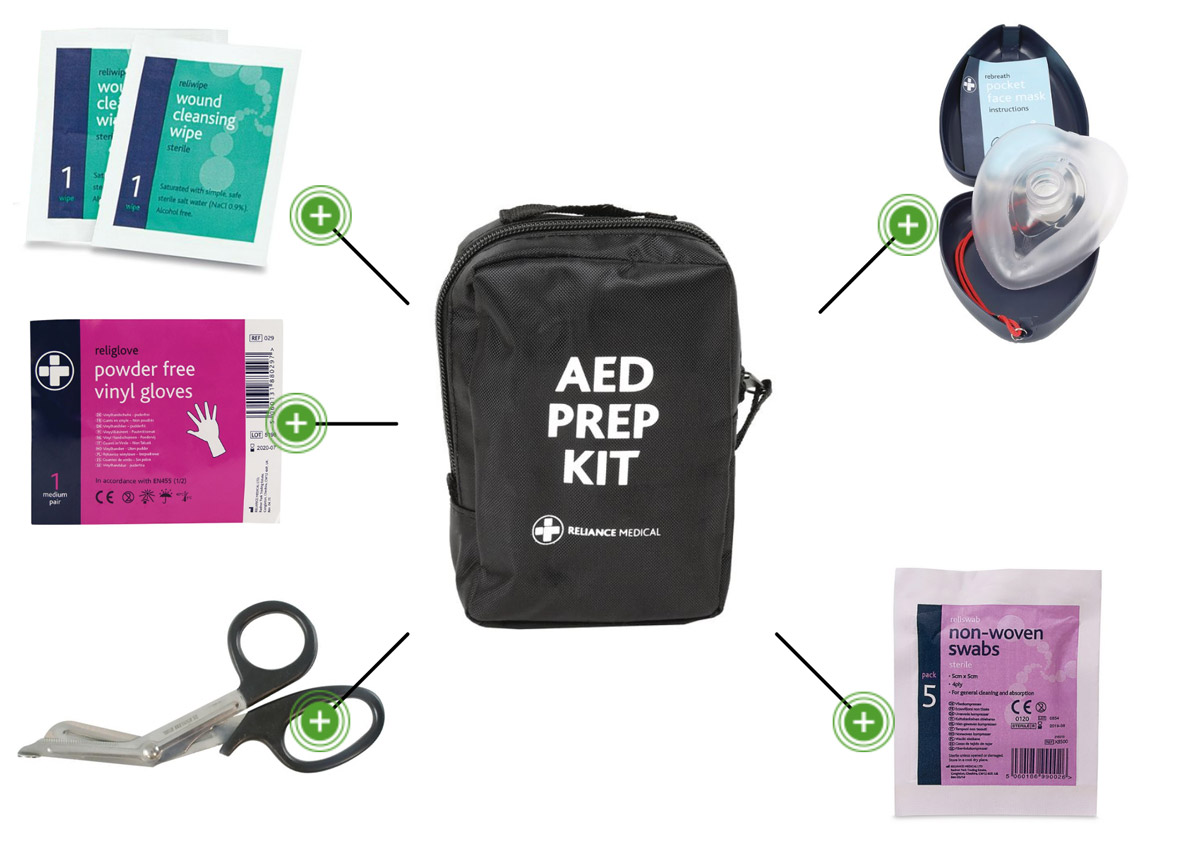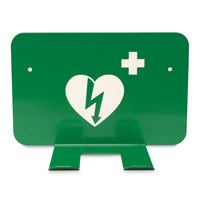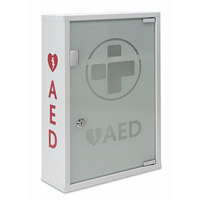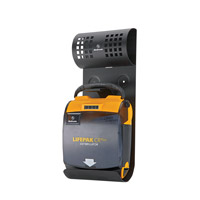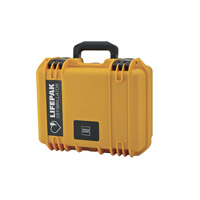-

Philips Heartstart Smart Pads Cartridge - Adult
£77.53Supplied in: Single -

Cardiac Science G5 & G3 Batteries
From £362.00 To £369.00Supplied in: Single -

ZOLL AED Plus Adult CPR-D-padz® Electrodes
£157.00Supplied in: Single -
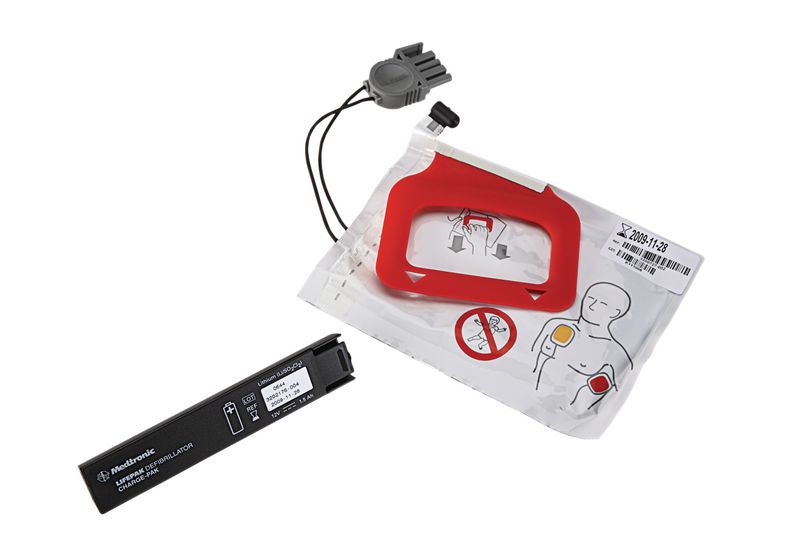
Charge-Pak Battery Charger With Pads
£453.49Supplied in: Single -

Philips Battery Pack for FRx & HS1 Defibrillator
£186.99Supplied in: Single -

Cardiac Science G5 CPR Adult Pads
£171.00Supplied in: Single -

Cardiac Science G5 Adult & Paediatric Defibrillation Pads
From £80.45 To £111.00Supplied in: Single set of pads -

Wall-Mount AED Defibrillator Cabinet
£106.56Supplied in: Single -

Heated Outdoor AED Storage Cabinet
£576.90Supplied in: Single -

LIFEPAK CR2 Replacement Battery Pack
£386.19Supplied in: Single -
Promotion

Cardiac Science G3 Adult & Paediatric Defibrillation Pads
From £62.79 To £111.25
From £60.00 To £111.25
Supplied in: Single set of pads -
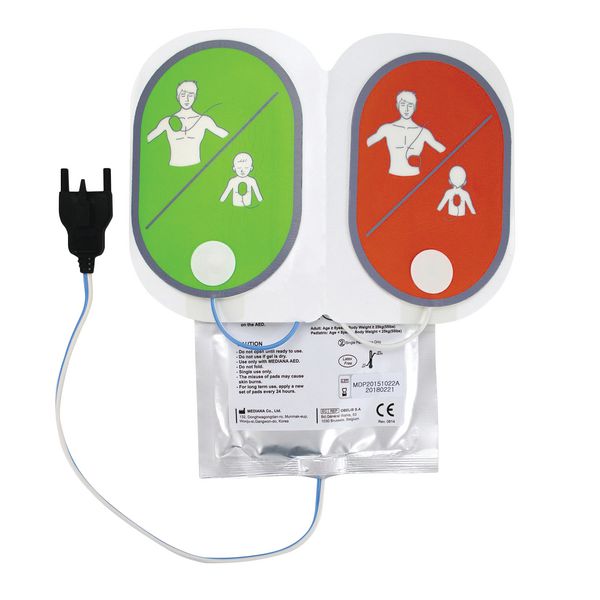
Mediana HeartOn A15 Replacement Electrode Pad
£62.10Supplied in: Single -
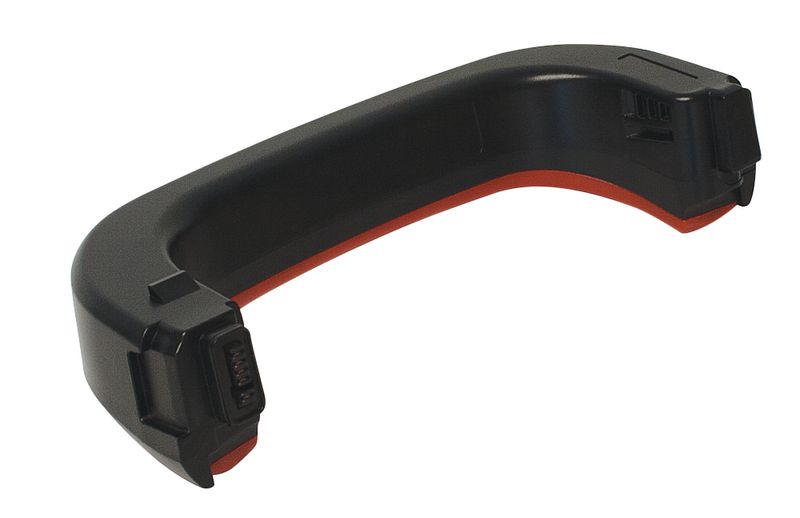
Mediana HeartOn A15 Replacement Battery Pack
£199.85Supplied in: Single -

Pack of 10 Duracell Lithium batteries
£62.99Supplied in: Pack of 10 batteries -
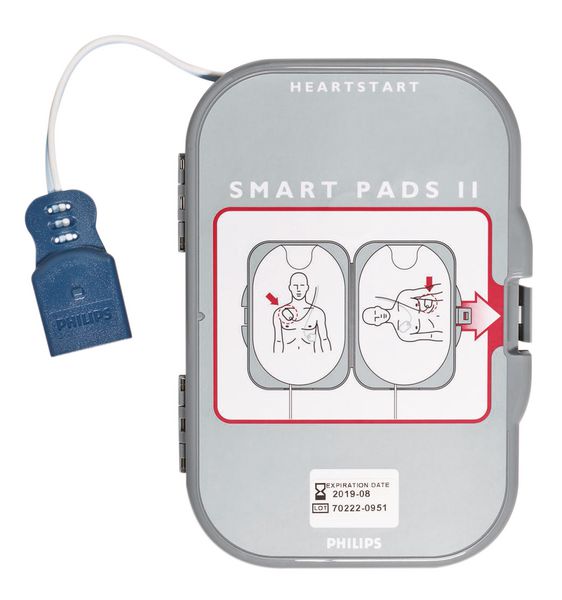
Philips HeartStart FRx SMART Pads II
£100.99Supplied in: Single -

LIFEPAK CR2 Replacement Electrode Pads
£202.09Supplied in: Single -
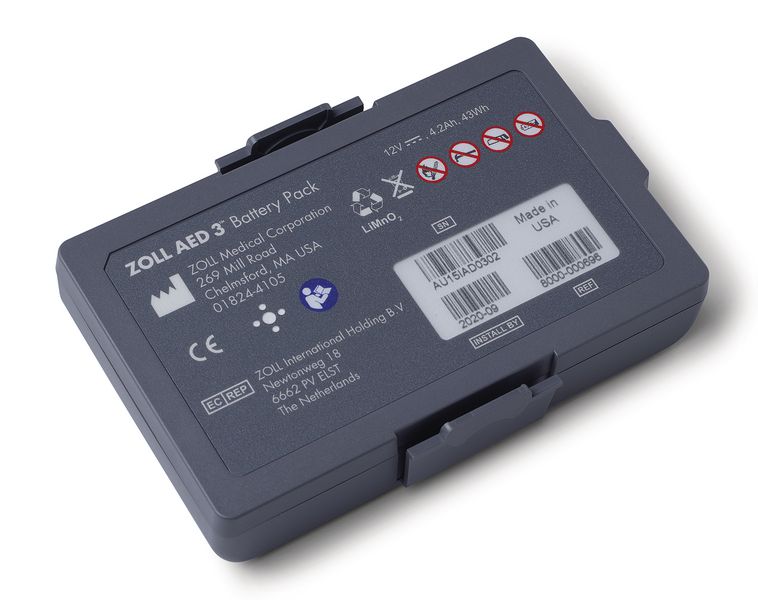
ZOLL AED 3 Battery Pack
£186.00Supplied in: Single -
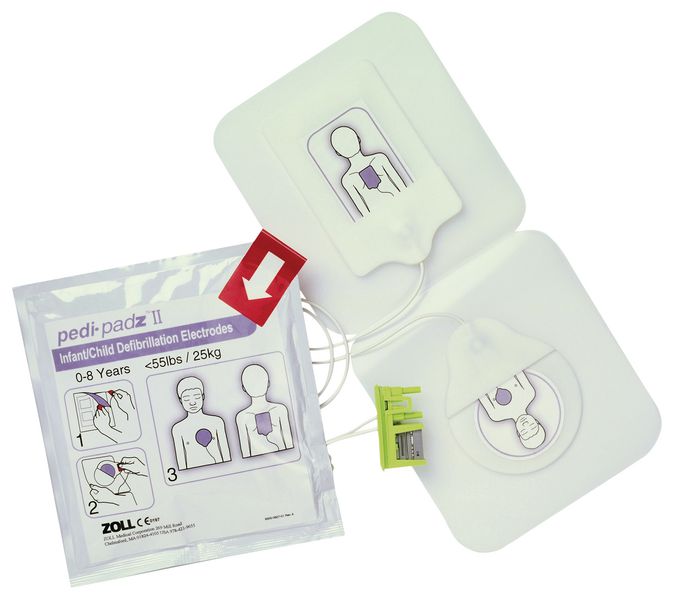
ZOLL AED Plus Child Infant Pedi-padz® II Electrodes
£121.00Supplied in: Single -

AED Responder Kit
£11.24Supplied in: Single -

ZOLL AED Plus® Indoor Wall Bracket
£79.85Supplied in: Single -

ZOLL AED Plus® Training Defibrillator
£467.69Supplied in: Single -
Promotion

Lifepak Infant Electrodes
£199.99
£167.45
Supplied in: Single -

Polycarbonate Defibrillator Cabinets
From £208.08 To £242.55Supplied in: Single -

AED Defibrillator Wall Bracket
£43.15Supplied in: Single -
Promotion

ZOLL CPR Uni-padz™ Electrodes
£199.59
£192.00
Supplied in: Single -

Mediana Training Defibrillator
£539.59Supplied in: Single -

ZOLL AED 3 Wall Brackets
From £77.45 To £90.15Supplied in: Single -

ZOLL AED 3™ Carry Case
£146.00Supplied in: Single -
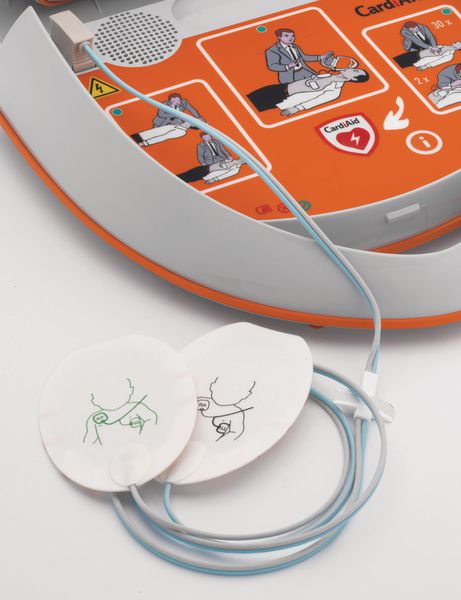
24 Months Defibrillator Servicing For Cardiaid
£344.09Supplied in: Single -
New

Defibrillator Inspection Tags
From £4.09 To £42.19Supplied in: Single -
New

AED Station Shadowboard for Schools
£59.99Supplied in: Single -
New

Heart Shaped AED Wall Station Sign
£39.99Supplied in: Single -

CardiAid Paediatric AED Pads
£60.47Supplied in: Single -

Philips Heartstart Smart Pads Cartridge - Infant
£137.01Supplied in: Single -

Rebreath Training CPR Face Shield with Filter Papers
£148.71Supplied in: Pack of 10 -

Resuscitation First Aid Pack
£35.95Supplied in: Single kit -

LifePak Hard Defibrillator Case
£417.19Supplied in: Single
Defibrillator Accessories
Need help?
 See which accessories would suit your AED requirements
Quality Defibrillator Pads, Cabinets, Batteries & More
See which accessories would suit your AED requirements
Quality Defibrillator Pads, Cabinets, Batteries & More
When you purchase an AED for your work, home or public space it is important to include spares such as replacement defib pads and batteries. At Seton, we supply a huge range of defibrillator accessories – from Philips and Zoll to Cardiad and Cardiac Science – we have what you need.
An AED is only useful if it is kept in working order. The best way to do that is to keep it safe, yet accessible with a dedicated defibrillator cabinet. Looking for something more portable? How about an AED carry case for protection on the go? Shop today for fast delivery.

Expert Information
Defibrillator Accessories Guide
What equipment should you keep with an AED?
When it comes to using an AED (Automatic External Defibrillator) there are some important items that you will need to perform this, potentially life-saving, task effectively. Designed to be used alongside CPR techniques, most defibrillator units will come with everything you need to get started but there are also many recommended accessories you may wish to add.
Defibrillators are not required by law to be fitted in workplaces, but they are a very sound investment, especially in larger offices or workplaces with higher health and safety risks present. If you choose to keep a defibrillator on-site, then the chances are you might also need some defibrillator accessories to help keep it safe and secure. For more information about defibrillation machines it is crucial you read through our Automated External Defibrillator- AED guide to find out everything you need to know about this life saving equipment.
From a suitable storage method to replacement defib pads and a spare AED battery or two, it is also advised to add a number of smaller items either on your person or stored with your chosen defibrillator.
The AED Responder Kit is a cost-effective way to ensure these essentials are on hand. When it comes to a case of sudden cardiac arrest (SCA), every second counts - for every minute that passes, the victim’s chance of survival reduces by around 10%. For this reason you don’t want to be wasting time searching for shears for cutting through clothing, a razor to clear chest hair, or a mask or gloves for your own protection - all of these and more are included in a compact zip bag.
Whenever you install defibrillation products, it is important to ensure individuals are able to locate it when required. Signs are a great way to highlight the location and help guide people through the building to the nearest collection point. For more information, take a look at our huge collection of AED Signs.
Replacement Pads
How often do defibrillator pads need to be replaced?
While it will vary across manufacturers, all medical electrode pads have a shelf life, and as such are supplied with an expiry date. This date should be printed onto the defib pads themselves or stated in the user manual. At Seton we stock a huge range of defibrillator replacement pads, for all the major brands.
Looking for Philips defibrillators pads? We supply the Philips Heartstart Smart Pads in both adult and infant sizes. Supplied in pairs these replacement pads offer great value, ensuring you are always prepared with your HS1 HeartStart device.
We also stock Cardiac Science AED pads for the Powerheart G5 and Powerheart G3 models. Supplied as a single set of pads, each is available in either adult or paediatric formats with a shelf life of up to 2 years. Why not add both adult and child pad packs to your medical kit bag to ensure you are ready for any age patient?
Will an AED work with expired pads?
Whilst the device may function as normal, it is not recommended to allow any defibrillator to be left in storage, or worse still used, if the attached electrode pads are past their expiry date.
CORRODED
Over time the electrodes can deteriorate at the point they attach to the pads.
This may result in the electrodes becoming detached altogether.
UNRELIABLE
The gel on the pads deteriorates losing its ability to stick.
Once expired the pads may no longer adhere to the patient’s skin.
INEFFECTIVE
As the gel deteriorates it becomes unable to conduct a current.
This can make the pads useless or worse cause burns to the patient if used.
You might be able to carry out a visual assessment and not notice any particular faults, with expired defib pads, however when the pads are past their shelf life they may;
- Suffer corrosion at the point the electrodes connect to the pads, which could result in either or both electrodes becoming detached from the respective pad
- Not adhere to an individual’s skin, due to deteriorated gel
- No longer be able to conduct as intended, potentially causing a lack of energy or an uneven distribution of energy; potentially resulting in burning the patient
From Zoll, Philips and Cardiad to Mediana, Cardiac Science and Lifepak, we stock a full range of defibrillator replacement pads, in both adult and paediatric sizes, so you can be sure to stock up on replacement pads no matter which make or model you use.
Are defibrillator pads universal?
The short answer here is no. Defib pads are not designed to be cross-compatible between the different makes and models of devices. As such it is recommended to ensure you have sufficient replacements for the item installed in your workplace, home, school or venue.
If there is a situation where a child requires resuscitation but the only available defibrillation machine has adult pads, it is recommended that these can still be used for a paediatric patient.
At Seton, we supply a comprehensive assortment of defib pad packs with fuss-free delivery, so you can always get the supplies you need promptly.
Replacement Batteries
This will largely depend on the make and model of AED you choose.
For example, if you have a Zoll AED Plus® you will need 123-type lithium batteries. Our Pack of 10 Duracell Lithium Batteries offers a cost-effective way to ensure you always have a supply of power for your Zoll device, at an affordable price.
Other defibrillator replacement batteries are specifically designed for an individual model. Such as the Philips Battery Pack - this replacement battery is compatible with the Philips HeartStart HS1 and Philips FRX models.
| Product | Compatible AED(s) | Product | Compatible AED(s) |
|---|---|---|---|
| Cardiac Science G5 & G3 Batteries | Cardiac Science G3 Cardiac Science G5 |
Mediana HeartOn A15 Replacement Battery Pack | Mediana HeartOn A15 |
| Philips Battery Pack for FRx & HS1 Defibrillator | Philips HeartStart HS1 Philips FRx |
Pack of 10 Duracell Lithium batteries | ZOLL AED Plus® |
| ZOLL AED 3 Battery Pack | ZOLL AED 3™ | LIFEPAK CR2 Replacement Battery Pack | LIFEPAK CR2 |
How often do you change the battery in a defibrillator?
It is advised to consult the instruction manual, or contact the manufacturer of your specific item to confirm how long you can expect the AEDs battery to last. As a rule of thumb, most are designed to run in standby mode for somewhere between 2 and 5 years.
For example the Mediana HeartOn A15 Replacement Battery Pack is engineered to provide up to 10 hours of usage time and up to 5 years in standby.
Storage Options
Where should I keep my AED?
The Resuscitation Council UK and British Heart Foundation state that all AED devices should be located as close as possible to their most probable place of use. Essentially, close to any location where it is considered there is a risk of cardiac arrest or other incidents which may cause a person’s heart to stop beating correctly. For many workplaces these areas should be highlighted as part of a risk assessment. For smaller premises, you might choose to keep your defib machine in or near to the first aid room, if you have one.
When choosing a place for your new defibrillator you should consider;
- The layout of the building or venue
- The number of people who may be at risk
- The time and distance involved in reaching an individual who has collapsed
As a rule, it is recommended that an AED is not stored further than 200 metres (or a 2 minute brisk walk) from where such medical aid may be required. For any location this is not possible, it is worth considering using multiple devices to ensure the area is effectively covered.
In general, an AED should be accessible within 200 metres or two minutes’ brisk walk (four minutes there and back) from where it is needed. In a location where this is unlikely to be possible, placing more than one AED in different parts of the location should be considered. In some (e.g. rural) settings this may not be realistic; other ways of minimising delay in obtaining the AED should be considered.
A Guide to Automated External Defibrillators (AEDs)
Resuscitation Council UK in collaboration with British Heart Foundation
When deciding on the best way to store a defibrillator, we have an excellent range of products from which to choose. For example, the AED Defibrillator Wall Bracket works on a number of levels, as it not only keeps it safe and secure when not required, it also ensures it is highly visible and easy to access in the event of an emergency. It is easy to fix to the wall and comes in a size that is compatible with most defibrillators – although you will want to be sure to measure your own device before purchase to ensure it fits properly.
Another option when it comes to AED storage is the Wall-Mount AED Defibrillator Cabinet. This product, much like the Wall Bracket mentioned above, is also easy to fix to the wall and can provide easy access to the device, but also adds an extra layer of safety and security for when it is not needed. It comes with a toughened glass door to view the defib device, and an in-built shelf that can be used for any other AED accessories you might have. It is also lockable, so only those with the key can access it.
If you have chosen to purchase a Lifepak defibrillator, you might be interested in the Wall Bracket for the Lifepak AED Defibrillator, which has been specifically designed for use with a Lifepak branded AED. This storage option also fits easily to a wall and allows for easy access and view so that workers are immediately aware where the AED is stored.
For those who work in more than one location you might want to add the Lifepak Hard Defibrillator Case. The hard outer shell ensures the defibrillator is kept safe and secure inside, even when being transported from place to place. It is also water resistant. This item would be particularly useful for construction workers that move between sites regularly but want to keep a defibrillator with them.
What temperature should a defibrillator be kept at?
As with most appliances all defibrillators should be kept within their working temperature range. In most cases this is between 0°C and 50°C. The ambient temperature should always be considered when choosing where and how to store your AED(s). For specific information we suggest consulting the instruction manual or contacting the manufacturer of your specific product, to confirm operating temperatures.
Take a look at the table below to quickly compare potential effects of storing your equipment in unsuitable conditions against keeping the unit within the recommended range.
| Temperature | Premature Battery Discharge | Pads Unable to Adhere to Skin | Effective Treatment Possible |
|---|---|---|---|
| Too Cold (avg. < 0°C) | |||
| Too Hot (avg. > 50°C) | |||
| In Range (avg. 0-50°C) |
If you keep your device in an environment that is too cold, you are likely to find the battery runs low much quicker than it otherwise would. In particularly low temperatures you may also find the gel in the electrode pad may freeze. Either of these scenarios, or a combination or both, can render the appliance useless in an emergency.
Similarly if stored in a location that is too hot you are likely to notice the battery is depleted prematurely. Also, whilst not immediately noticeable, you may find any defib pads which contain a water-based gel do not adhere to the person’s skin properly. In this scenario it is because the water content has evaporated in the higher temperatures.
Does an AED need to be in a cabinet?
There is no requirement for an AED to be stored in a specialised cabinet. In most cases, these devices are specially designed to be portable - and that means compact - so it will come as no surprise that an AED will fit into places such as;
- The boot of your car or van/truck cab (just not in winter)
- Inside an office cupboard or a wardrobe at home
- On a shelf - such as under a bar or cafe countertop
However, whilst many of these locations may offer room for a defib unit, you may wish to add a specific AED cabinet, holder or carry case for a number of reasons including;
- To keep the device from being tampered with
- To maintain the integrity of the device - particularly in any environment involving liquids
- To draw attention to the location - so it can be found quickly in a crisis
Take a look at the table below to compare our top 3 fully enclosed storage cabinets for your defibrillation unit.
| Product | Size (mm) | Alarm | Heated | Indoor/Outdoor | Installation |
|---|---|---|---|---|---|
| Polycarbonate Defibrillator Cabinets | 361 x 310 x 164 | Optional | No | Indoor | Wall-Mount |
| Wall-Mount AED Defibrillator Cabinet | 460 x 300 x 145 | Yes | No | Indoor | Wall-Mount |
| Heated Outdoor AED Storage Cabinet | 500 x 400 x 220 | Yes | Yes | Outdoor | Wall-Mount |
At Seton, we supply a cabinet to keep your device safe and secure no matter the location. Our no-nonsense universal Polycarbonate Defibrillator Cabinets are made from tough, clear, polycarbonate to ensure your device is highly visible yet protected from vandalism and the most severe of impacts. This cabinet features an easy-to-use thumb lock mechanism that ensures it is quick to access the item when required while an optional alarm helps keep your investment protected from theft.
Can defibrillators be kept outside?
In short - yes. Any AED can be kept outside and you may have noticed more and more starting to appear in public places in recent years. However, if you intend to store a defibrillation unit outdoors, it is important to remember it will need to be kept within a suitable temperature range.
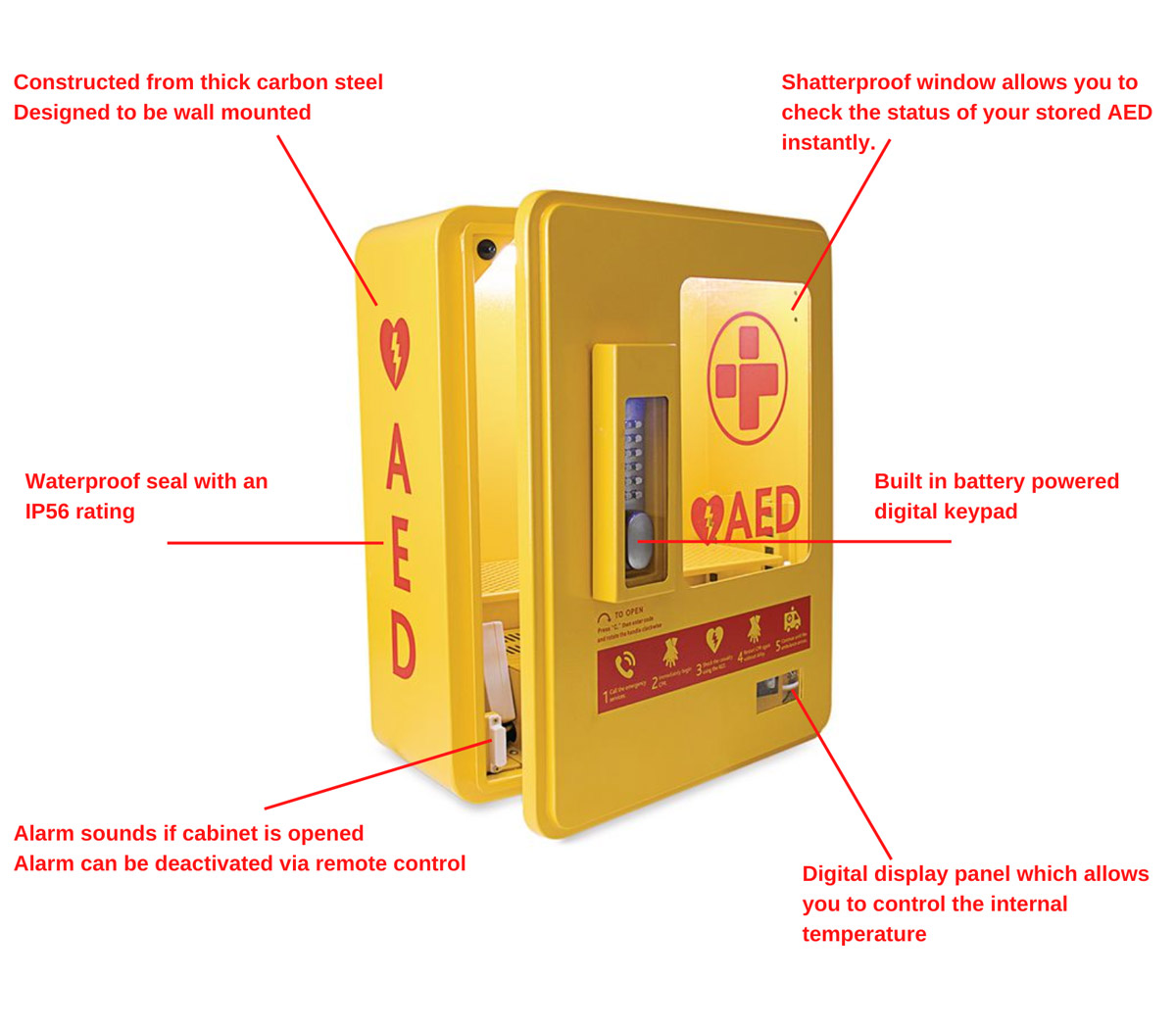
For this reason, we strongly recommend our Heated Outdoor AED Storage Cabinet. This defib cabinet offers a secure way to locate a defib device outside, whilst using a thermostatically controlled internal heating system to maintain the optimal temperature for the device. Designed to be wall-mounted this option is ideal for public locations such as train stations, shopping centres and event venues.
The IP56 waterproof rating and thick carbon steel construction helps protect your device from the elements while the shatterproof window and digital temperature display panel helps you view the status of the device with ease. The built-in alarm sounds whenever the door is opened but can be deactivated via use of the included remote control.
Do defibrillators need servicing?
It is advised that all AED devices are regularly checked to ensure they can be relied upon when it matters most. Each manufacturer will normally provide a clear instructional guidance booklet to explain what needs to be checked, how and when.
However, as a general rule of thumb, the British Heart Foundation provides the following guidance;
- Pay attention to any status indicator light or similar warnings. Most devices will perform a regular self-check and report any faults. Consult the manual to interpret any lights or warnings.
- Create a checklist for the items that should be kept with the appliance. Ensuring you always have items such as clothing sheers, safety razors and face shields to hand is a must.
- Check the expiration date of any electrode pads, including spares - replace these as necessary.
Regular checks will ensure that you are aware of when the electrode pads expire, whether your defibrillator has been used or if it has a fault, for example, the battery is approaching the end of its life. Therefore, it’s important to have a routine in place for checking your defibrillator.
How to look after a defibrillator
BHF.org.uk
If you have a Cardiad device, we recommend our 24 Months Defibrillator Servicing product. This 2-year service offering helps to keep your device in full working order without the fuss.


